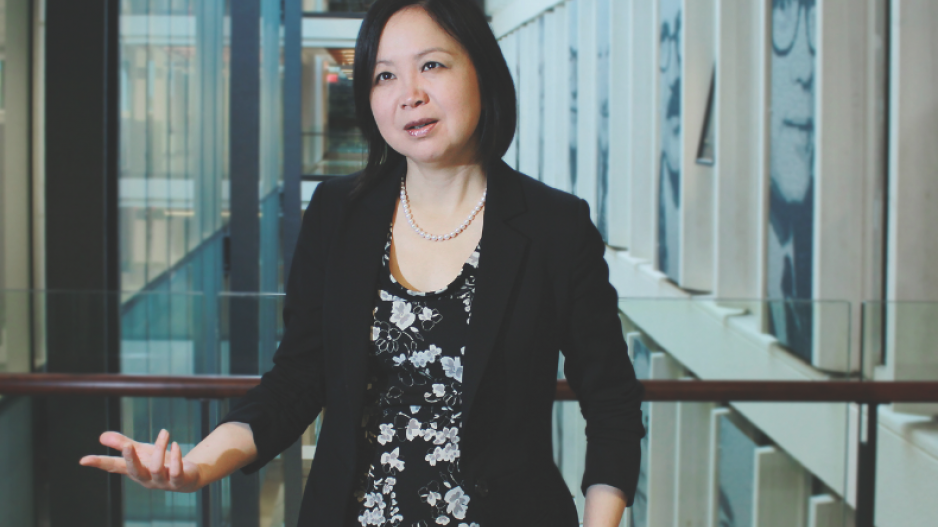Roller-coaster volatility and steep sell-offs have focused much of the investing world’s attention on China’s two main stock exchanges: the larger Shanghai Stock Exchange and the technology-heavy Shenzen Stock Exchange.
Western market watchers have been quick to point at features that differentiate those markets from North America’s main exchanges and exacerbate instability.
It’s not just that China’s markets are dominated by small retail investors whereas institutional investors do the lion’s share of trading on Canada’s TSX.
Although that factor clearly adds volatility because these smaller retail investors tend to be less sophisticated, more emotional and prone to treat investing as a form of gambling, said University of British Columbia Sauder School of Business finance professor Kai Li.
“Chinese people unfortunately are known as the gamblers of the world,” she said.
“Culturally, they are different. Investors are in for the short term and they are big-risk traders.”
Institutional fund managers in the West, conversely, tend to keep the vast majority of their capital invested all the time because their funds are marketed to be for people who want a certain level of exposure.
These fund managers are also more dispassionate because of experience and training to look at stock fundamentals as well as because they are managing someone else’s money. That prevents, at least to some degree, knee-jerk selling when markets dive, Li explained.
Chinese exchanges are also much younger than North American ones.
The New York Stock Exchange was founded in 1817, when there were no intercontinental railroads. The Shanghai Composite, in contrast, launched in 1990, following the invention of the cell phone.
“One big point of difference in China is that although rules and regulations are in the book, there is little actual enforcement,” Li said. “There is a big gap.”
The result is that insider trading is “rampant” in China, she added.
North America’s exchanges are not perfect, however, as The Big Short author and market critic Michael Lewis made clear when he was in Vancouver in November.
His biggest bugbear is predatory high-frequency trading that exists when traders use technology to “front run,” or use information they have that others do not in order to make a quick buck.
For example, traders’ technology could be alerted that a large buy order is placed on one exchange.
The traders’ computers then take that information and use a different exchange to place multiple orders for the same security and have those orders filled milliseconds before the large trade. Those purchases are then sold milliseconds later at a fractionally higher price.
The result is that the traders are guaranteed a gain that is a miniscule percentage but adds up to a huge sum quickly if millions of dollars are involved.
“If big investors, who are being screwed by exchanges and high frequency traders, are not angry enough to gather together and boycott the firms that are doing it, then the market doesn’t work very well,” Lewis said at an event to mark the 50th Anniversary of the CFA Society Vancouver.
Canada’s newest stock exchange aims to rattle high frequency traders
Anger over predatory high-frequency trading spurred Jos Schmitt to launch Canada’s newest stock exchange, the Aequitas NEO Exchange, last June.
Traders can use the exchange to buy and sell TSX-listed equities and companies can choose to list on the Aequitas exchange instead of on the TSX.
Schmitt told Business in Vancouver that he is not against all high-frequency trading. Much of that trading adds liquidity to an exchange and helps price stability.

(Image: Aequitas NEO Exchange CEO Jos Schmitt launched Canada's newest stock exchange in June | submitted)
He has put in place what he calls a “speed bump,” however, to guard against the kind of predatory high-frequency trading Lewis castigates.
Here is how that speed bump works.
Some investors want to buy Royal Bank of Canada (TSX:RY) shares on the Aequitas exchange and they place an order with a set price of $69.55. Their order must be filled before the price rises to $69.555 or $69.56.
So, if high-frequency trading technology spots a large buy order priced at $69.555, the technology would know that the price of Royal Bank shares is going up.
It would then potentially aim to buy all the sell orders priced at $69.55 with the intent to then quickly sell those newly purchased shares at $69.555.
Schmitt explained that if a trader were selling shares at $69.55 on the Aequitas exchange, the high-frequency technology would have to buy those shares before buying anything priced higher, such as $69.551.
Aequitas technology would slow the purchase for up to nine milliseconds, thereby adding a risk that by the time the trade closes, the large buy order at $69.555 may not still be available.
“We create uncertainty for them,” Schmitt said. “They are not sure that they will execute their trade because their order is slowed down for between five to nine milliseconds.”




